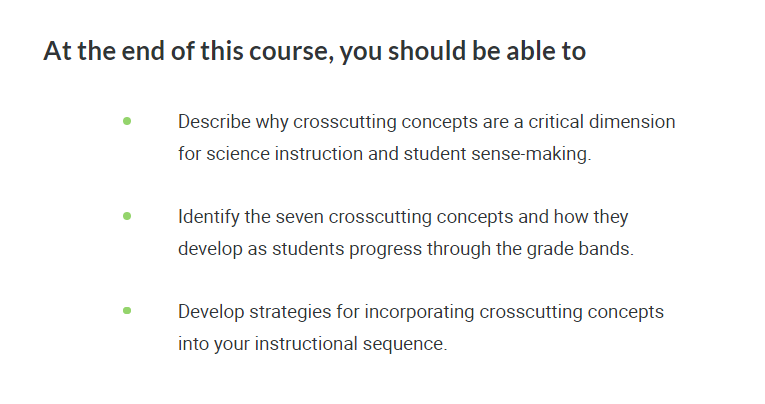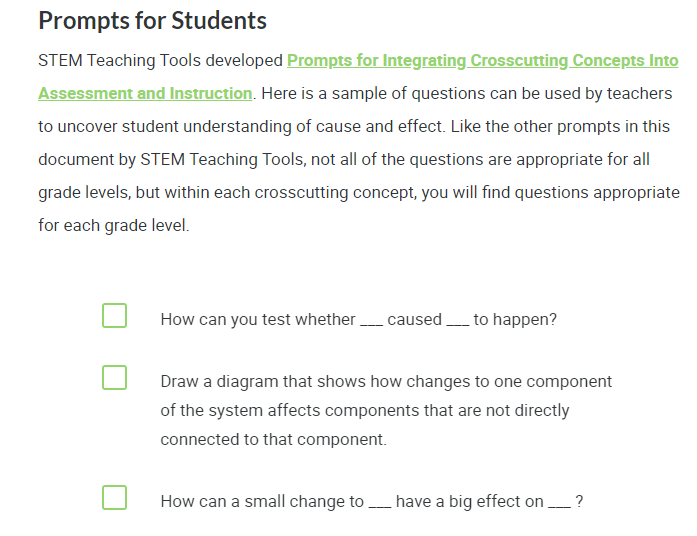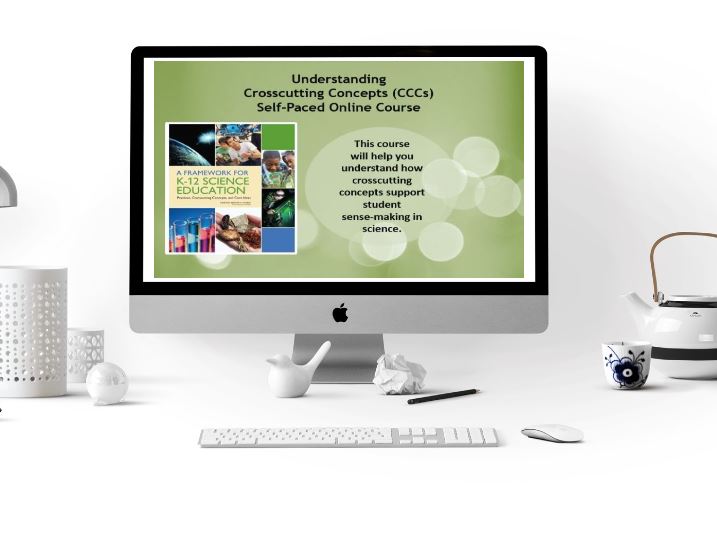Crosscutting concepts (CCCs) are a critical dimension when implementing the NGSS or Framework-based standards. One challenge I faced when providing instructor-led professional development about the NGSS was that science educators attending had a wide range of understanding of the CCCs; meeting all of their learning needs in the allotted time was challenging.
I conducted a needs analysis using surveys and interviews; results showed a wider range of understanding of the CCCs when compared to the disciplinary core ideas (DCIs) or science and engineering practices (SEPs).
To address this challenge, I used Rise to created a self-paced course that was a prerequisite for attending the professional development. The purpose was to create a shared baseline understanding of the CCCs so the time during the instructor-led sessions could be used more effectively.

Each section focuses on a crosscutting concept and links to the corresponding pages in A Framework for K-12 Science Education. This background information helps build a shared understanding of why CCCs are an important dimension of science sensemaking.
Additionally, I developed tab interactions so learners could compare a description and example of the progression of each CCC across the four different grade bands: primary (K-2), elementary (3-5), middle school (6-8), and high school (9-12).

Each section includes implications for instruction that uses clickable markers to pose each of the four guiding questions. This helps educators begin to think through how each CCC is or can be presented through their curriculum and instruction. The instructor-led professional development focuses on this aspect and learners bring their ideas generated during this prerequisite elearning module to the in-person course.

Finally, I added a section that provided examples of different prompts that could be used in the classroom with their students. During the instructor-led professional development session, we further explored these prompts and learners had opportunities to develop their own prompts specific to the curriculum they taught.

Learner evaluations (Kirkpatrick Level 1) of the online training module showed a high degree of satisfaction with the module and an increased comfort level with how CCCs contribute to student sensemaking. Additionally, learner evaluations (Kirkpatrick Level 1) administered following the instructor-led professional development showed a statistically significant (p < .01) increase of overall course satisfaction and readiness to implement after learners completed both courses, compared to learners who attended the instructor-led professional development without the prerequisite learning.

